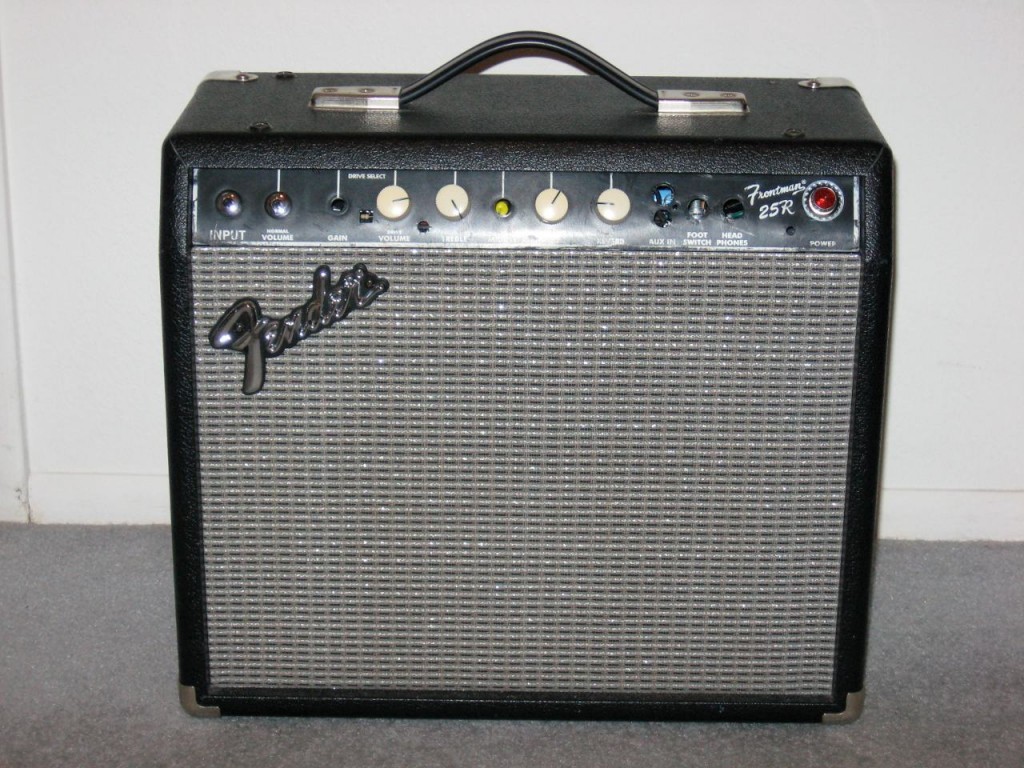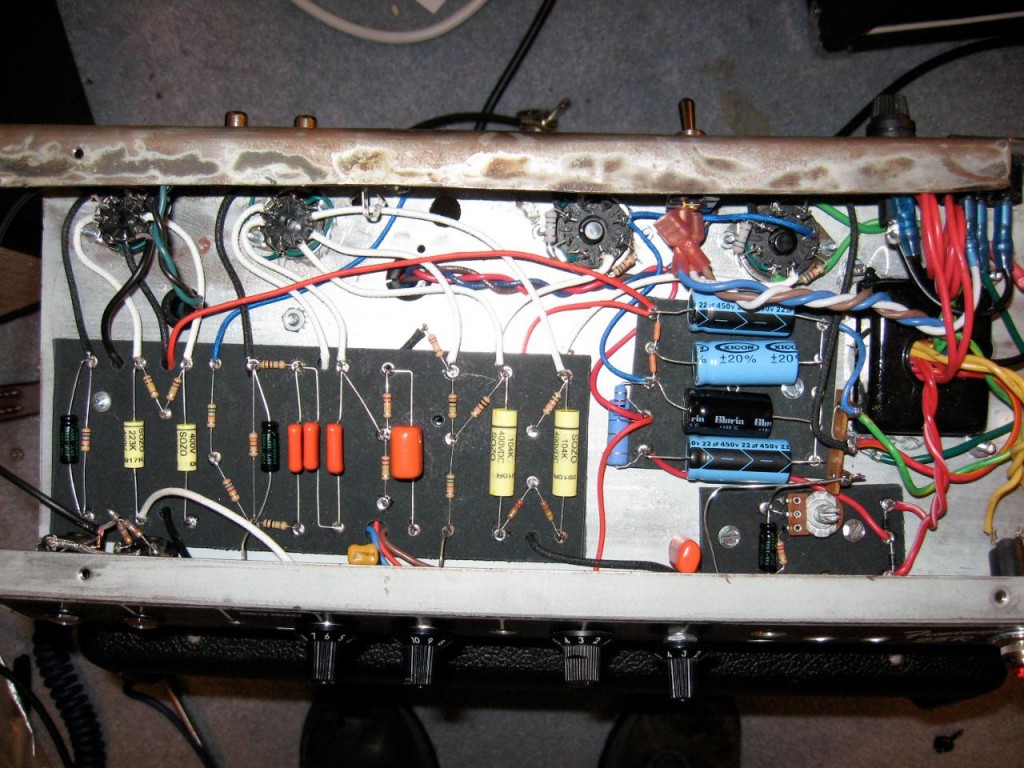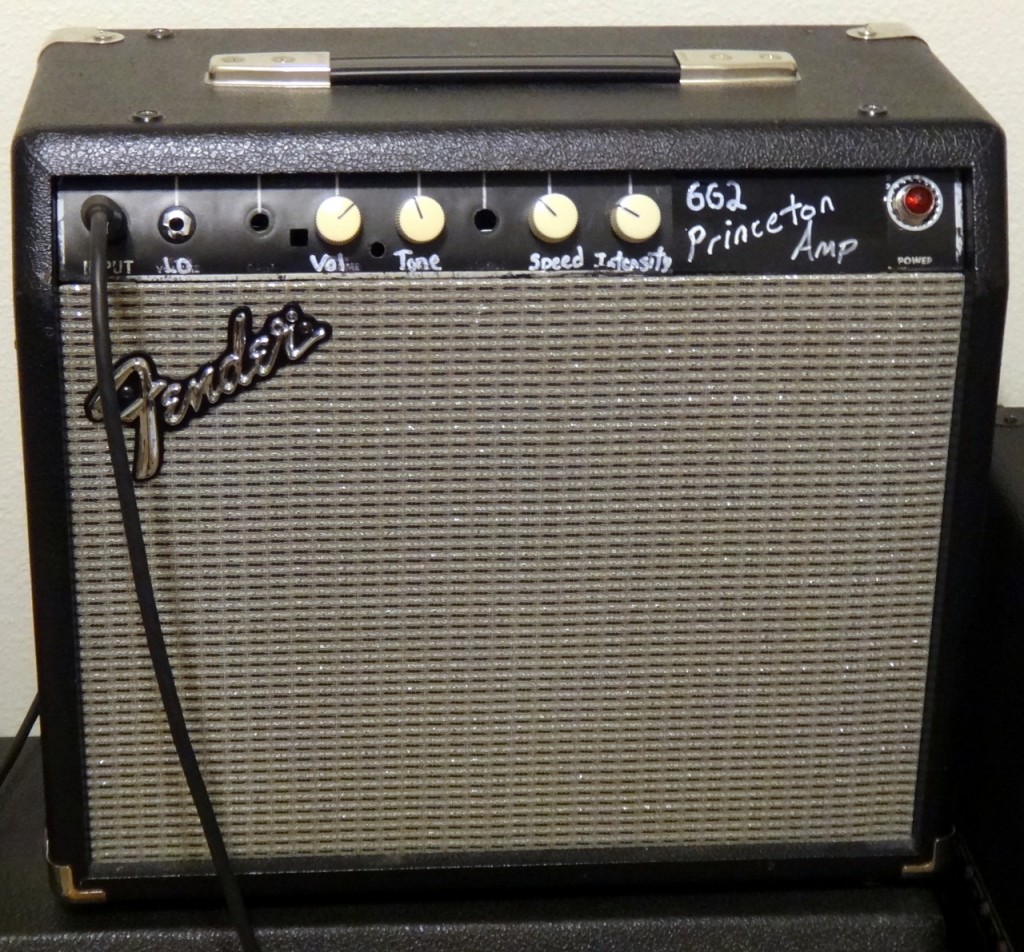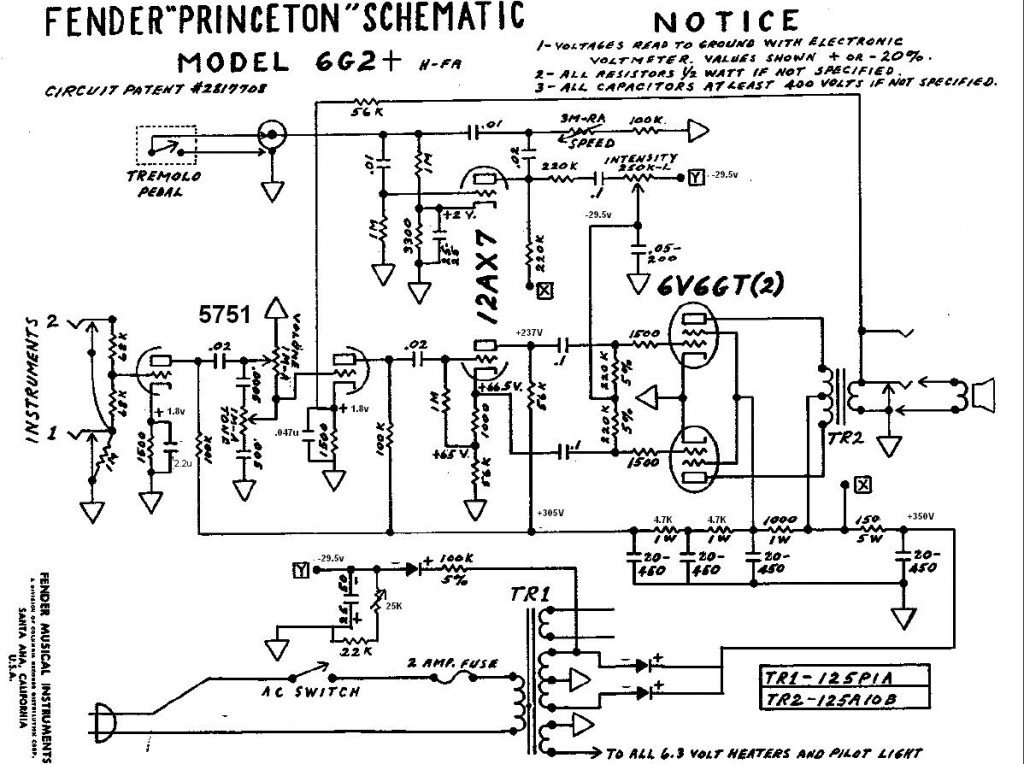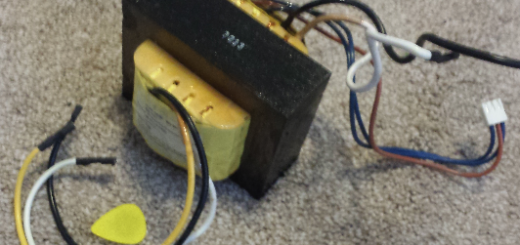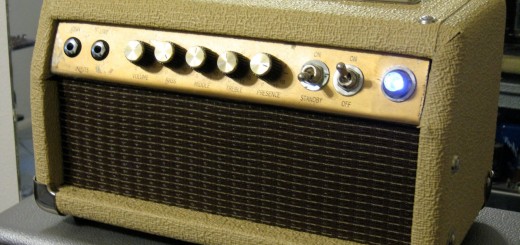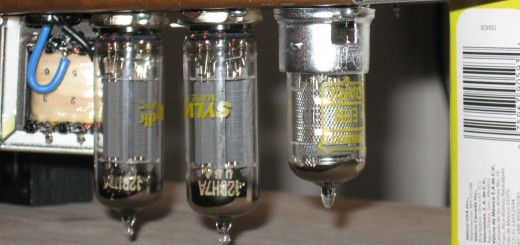How It Started
A few years back I took a Frontman 25 cabinet and chassis and turned it into a Vibro Champ. I messed around with it, modded it, got a nice Weber Alnico 10″, even added foldback reverb, but I was never happy with the way it sounded. Eventually I got fed up and decided to turn it into a Brown Princeton.
This chassis had 2 octal sockets and 2 9-pin sockets, and there wasn’t enough room to add a socket for the rectifier. I was also keeping the PT from the Vibro Champ. I went solid-state for the rectifier, which left me with 6G3 Deluxe-range voltages (375v B+). I reused the existing filter cap board I built for the champ (20/20/20/20). My filter setup is a little abnormal, but the amp is truly dead silent with no instrument plugged in. I got a Hammond 1750H Deluxe output transformer to get a little more oomph out of the power section. Eventually I added a 50v Zener diode to the power supply, dropping the B+ to around 330v.
Let the Mods Begin…
I first built the rest of the amp with all stock values. It was a bit darker than I expected, so I did some experimenting. I reversed the input and output connections on the tone stack, like the 5D and 5E era single-knob tone controls. V1A’s 25uf cathode bypass cap was replaced with a 2.2uf, and I added a .047uf cathode bypass cap to V1B. This reduced the bassiness on the front end and boosted the highs at the second stage. Unfortunately it also aggravated the “blattiness” that happens when the cathodyne phase inverter is overdriven. I added a 220k grid stopper resistor to the cathodyne. Later I removed the .047uf resistor and put a traditional 5K/.1u presence control in its place.
Attention to Detail
After I built my 6BM8-powered Bassman I tried running it through the Weber 10A125 in the Princeton’s cabinet. I was shocked at how much better it sounded than the Princeton! Then I tried plugging the Princeton into an 8-ohm 1×12 I had, and it sounded a whole lot better. Looking into it further I found that the original Princeton saw 8K impedance into an 8 ohm output. The 1750H tranny does 6.6K into 8 ohms, but my 10A125 is a 4-ohm model (since I bought it originally for the Champ circuit)! So basically my output section was seeing 3.3K for load, which is WAY out of whack. Conveniently my AC15 had an Allen/Heyboer TO22, which is a 15w 6.6K into 4 or 8 ohm OT. I swapped the OTs, fed the NFB off the 8 ohm tap, and it got a LOT better.
Tube Selection Really Matters
Still, the Princeton’s distortion would get nasty when the volume was turned past 3 o’clock. I scoped the preamp and everything looked good, so my focus went to the power section. I found some comments on the internet that the VT-107 generation of GE-manufactured 6V6GTs (including the grey-bottle Ken-Rads I was using) are sensitive to high distortion and don’t do well fully cranked. I tried a pair of JJ 6V6S, which sounded much better. Still, it needed something more.
When I built a Tweed Twin out of Hammond organ parts I suddenly had some late-60′s Hammond-branded GE 6V6GTs at my disposal. There’s definitely something special about these tubes, especially with a higher-swing cathodyne and a magnificent Telefunken 12AX7 in V1. I finally understand what the fuss is all about with old 6V6-based amps!
Tube Lineup:
- V1: Telefunken 12AX7
- V2: JJ ECC823 (low-mu triode as cathodyne)
- V3: “Hammond” branded GE 6V6GT
- V4: “Hammond” branded GE 6V6GT

